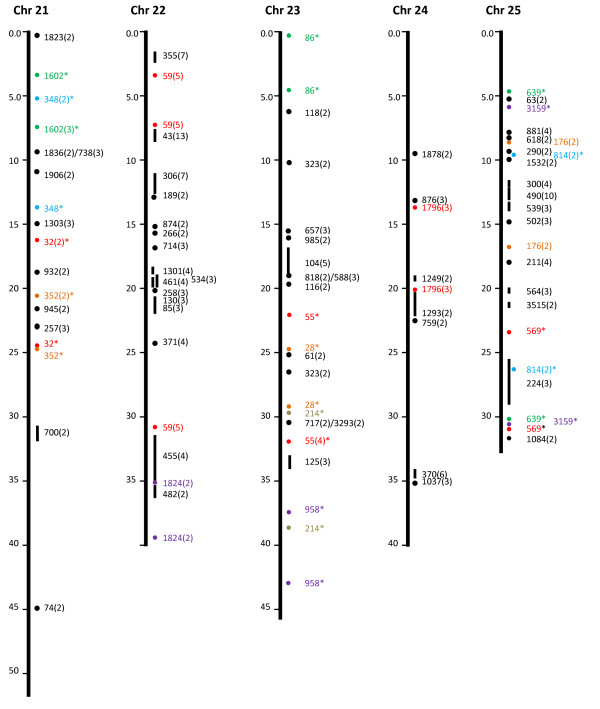Figure 5.
Identification of microsyntenies through comparative sequence analysis (chr 21 through chr 25). tBLASTX searches were conducted using BAC contig-associated BAC end sequences as queries against the zebrafish genome sequence. The putative conserved microsyntenies are presented along the 25 zebrafish chromosomes (chr 1 through chr 25). The position of the zebrafish sequence is shown on the left of each chromosome bars in million base pairs. The conserved microsyntenies are indicated on the right side of the chromosome bars, with the numbers representing the contig numbers of the BAC assembly of the catfish physical map [41]. Circles represent short syntenic regions and short vertical lines represent relatively longer conserved syntenic regions proportional to the length of the bar with a number in parenthesis representing the number of conserved sequences within the microsyntenies. The microsyntenies designated with asterisks (*) are those with duplicated conservation of the microsyntenies that are color-coded to facilitate the visualization of the duplicated syntenic regions along the chromosome. Duplicated syntenic regions refer to a conserved genomic segment between the catfish genome and the zebrafish genome that is duplicated in the zebrafish genome such that identical or nearly identical significant hits are generated from two chromosomal regions of the zebrafish genome using a single catfish genome segment (say it is a contig or a scaffold) as the query. In just few cases, this term is used in an extended fashion to include those that are tripled in the zebrafish genome.

